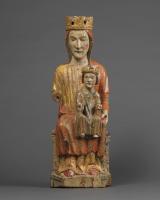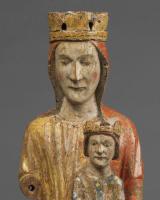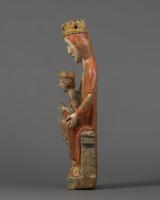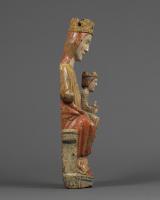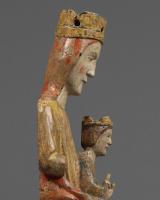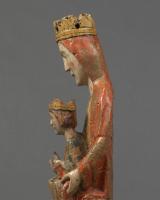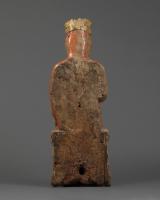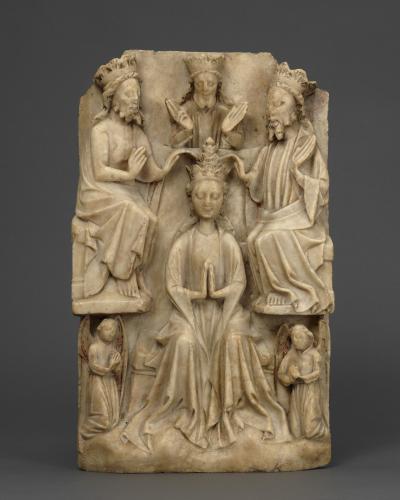
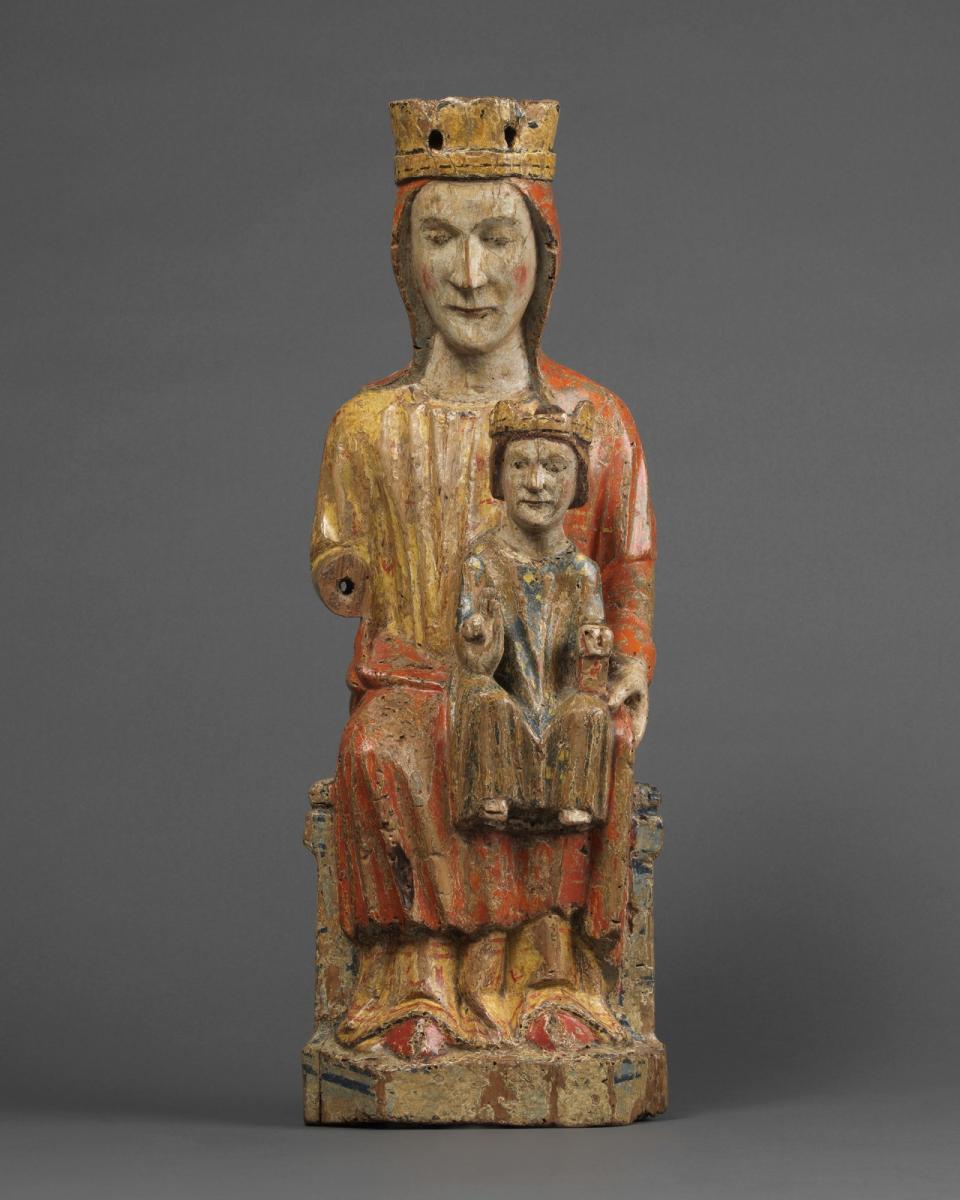


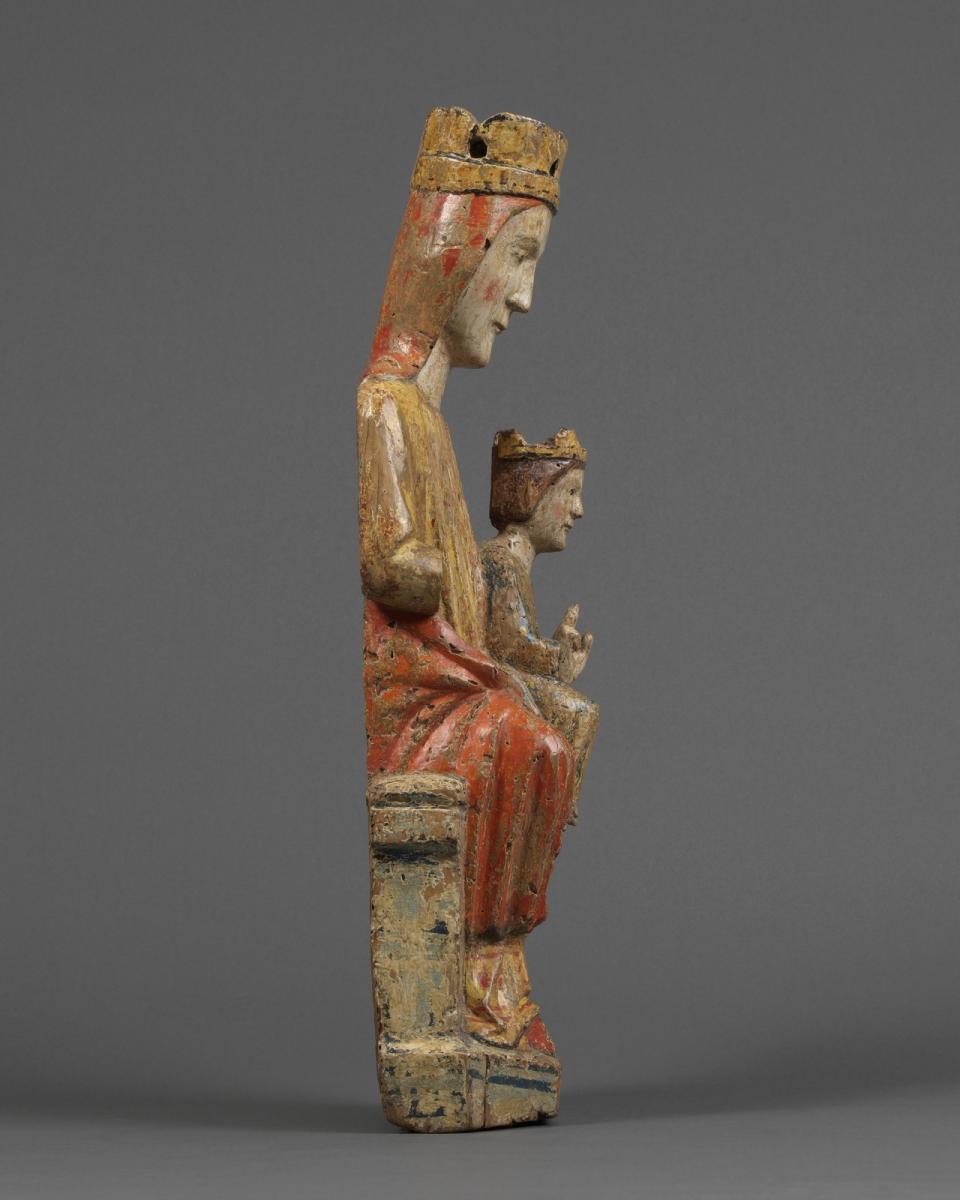
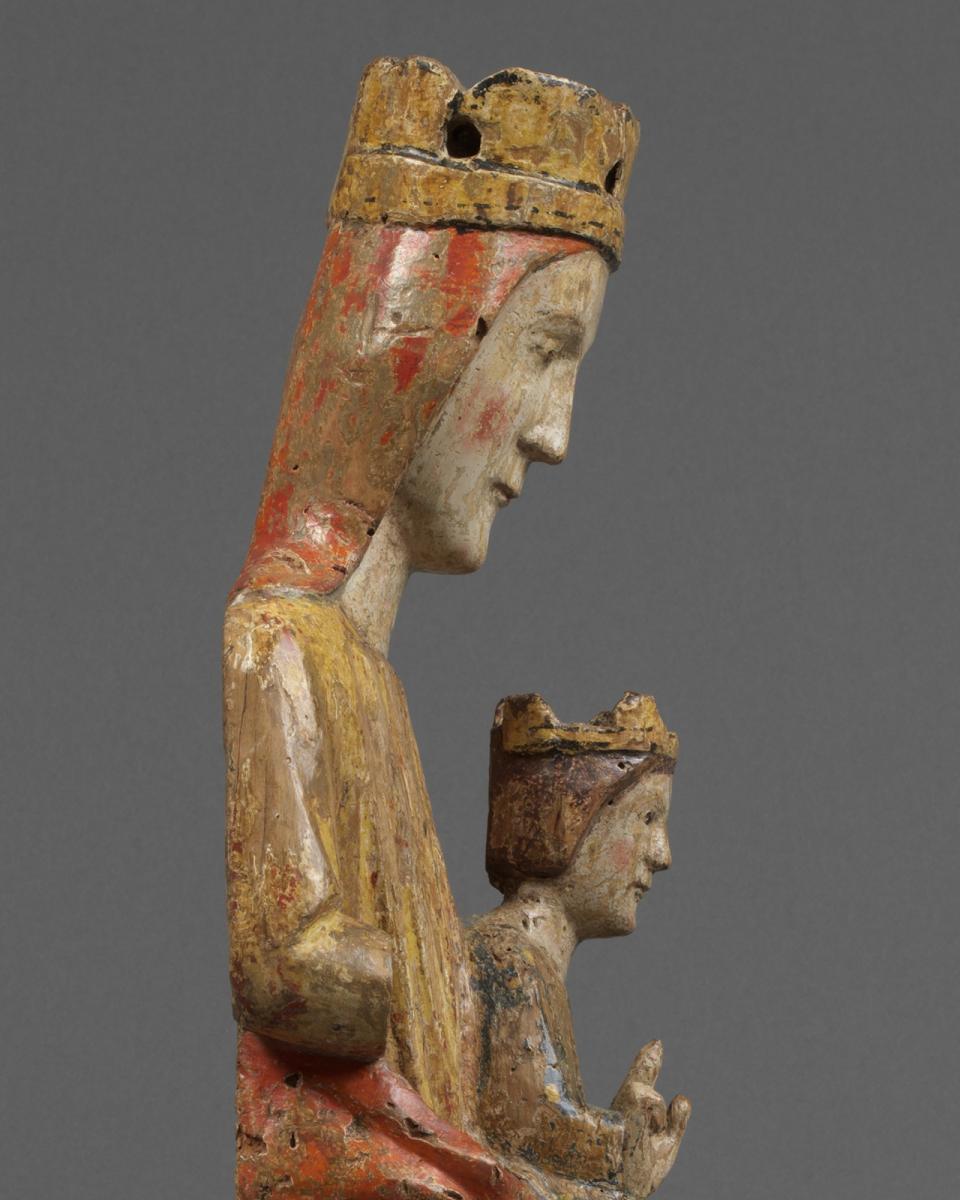
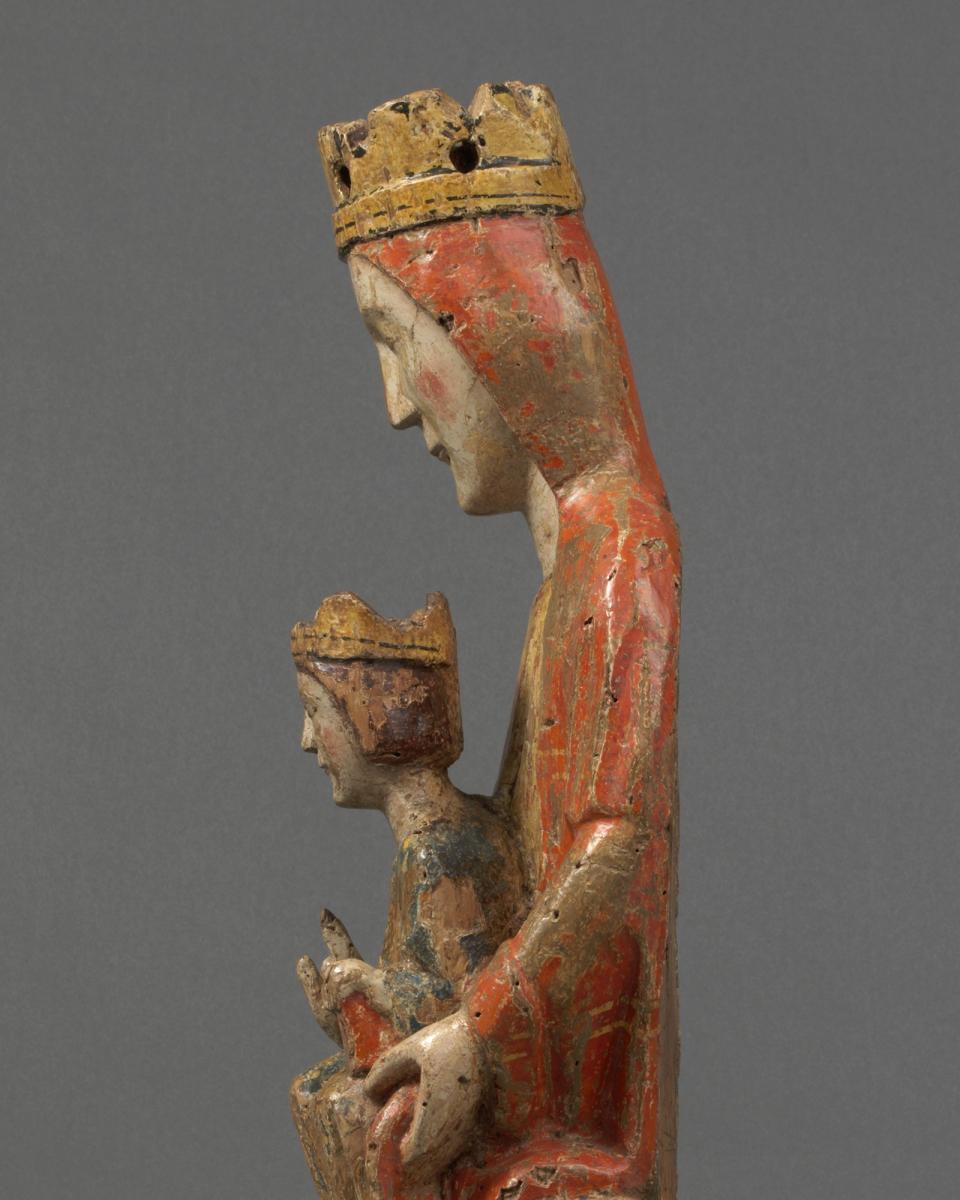
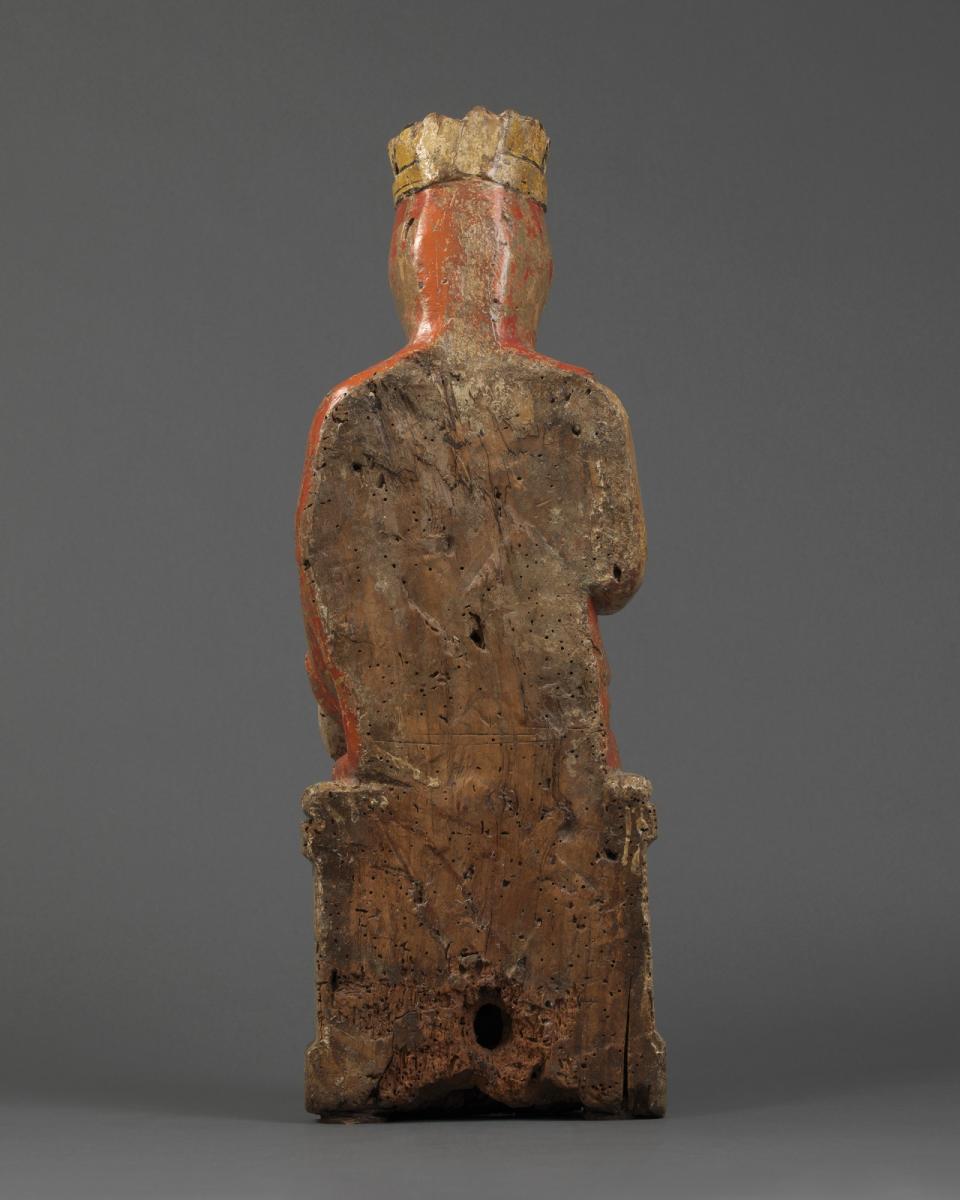
Price on application
This object is eligible for a Certificate of BADA Provenance
The BADA Standard
- Since 1918, BADA has been the leading association for the antiques and fine art trade
- Members are elected for their knowledge, integrity and quality of stock
- Our clients are protected by BADA’s code of conduct
- Our dealers’ membership is reviewed and renewed annually
- Bada.org is a non-profit site: clients deal directly with members and they pay no hidden fees
Sedes Sapientiae
Enthroned Virgin and Child
Walnut, with original polychrome
Spain, León, mid 13th century
Provenance:
Private collection, Spain
Dimensions:
Height: 53.8cm; 1 ft. 9⅕ in.
Width: 18.8 cm; 7⅖ in.
Depth: 12.8 cm; 5 in.
This extraordinary Romanesque object belongs to a group of early representations of the Virgin and Child known as the Enthroned Virgin and Child or Sedes Sapientiae (the ‘Seat of Wisdom’ or ‘Throne of Wisdom’). The Latin phrase likens the Mother of God in majesty to the Throne of Solomon, the Prophet King, referring to her exalted status as a vessel of the Incarnation carrying the Holy Child.
The subject embodies a complex and core Christian doctrine of the Virgin's role in the Incarnation (the moment in which Christ became flesh) and ultimately in the redemption of humankind. The Incarnation gave Mary a unique position as principal mediator between heaven and earth, and between God and humankind. The association of the Blessed Virgin with glory and teaching in this tradition was popularised in Catholic imagery from the mid 11th century.
Mary sits, enthroned, in a strict frontal upright position, the Christ Child placed on her left knee sitting with the same formal posture, facing the viewer, his right hand raised in a blessing movement, his left hand holding the book of Holy Scriptures. As she is seated on a throne, she in turn becomes the throne to the Christ Child, thus symbolising her role in giving birth not only to the human Jesus, but also to the divine Christ.
The Virgin wears a tunic of ochre tones with a cloak of orange that covers her lap on which her child sits, folds of material falling to rest just above the ground revealing the front section of both shoes. With a high forehead, an angular nose, purse thin lips and arched eyebrows, she gazes downwards. Both Mother and Child wear flat crowns, the Virgin's hair tucked beneath, a simple veil framing her face and neck falling to rest lopsided off one shoulder.
Of masterly quality and in exceptional original condition, this petite devotional object is most likely to have been produced as an important private commission designed to be placed in a dedicated niche of a private chapel. Small and sweet, yet conveying a sense of refined elegance, it is a timeless representation of Mother and Child easily placeable in any modern interior.
Carved in León, a city on the Bernesga River in northwest Spain, in the mid 13th centuy, its small size and magestic orginal colour palette mark this object as a superb rare example of the craftsmanship of the region and period.
We are grateful to Dr. Antoni José i Pitarch, Professor of Art History, Universitat de Barcelona, for confirming the attribution based on first hand examination of the work.
The BADA Standard
- Since 1918, BADA has been the leading association for the antiques and fine art trade
- Members are elected for their knowledge, integrity and quality of stock
- Our clients are protected by BADA’s code of conduct
- Our dealers’ membership is reviewed and renewed annually
- Bada.org is a non-profit site: clients deal directly with members and they pay no hidden fees


